The group has made research progress in the direction of hysteresis effect of groundwater dynamics and its prediction:
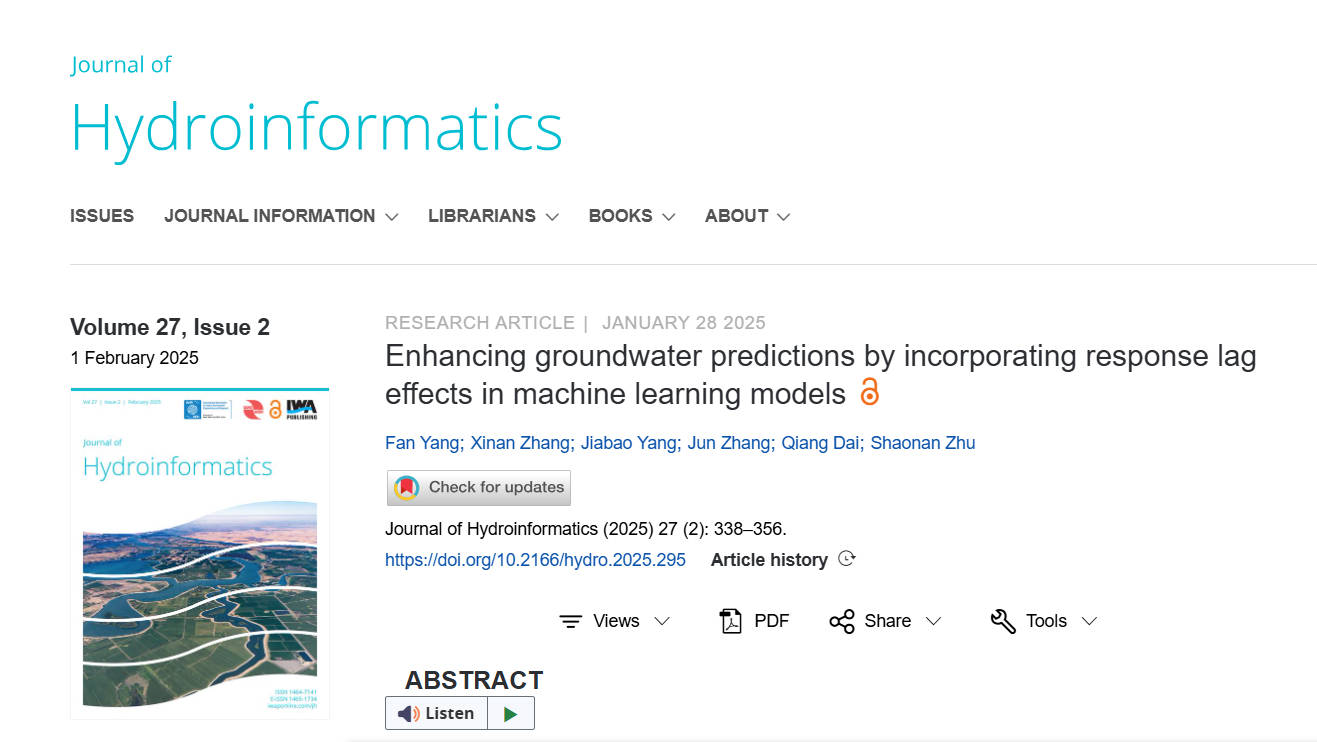
Groundwater, as an important water resource, is facing challenges such as overexploitation and imbalance between supply and demand. Therefore, it is particularly crucial to accurately grasp the trend of groundwater changes. However, there is a certain lag in the response of groundwater level to meteorological factors, a phenomenon that is often neglected in existing studies, thus affecting the accuracy of prediction results. To address this issue, our team's undergraduates Yang Fan, Zhang Xinan, and Yang Jiabao published their research results entitled “Enhancing groundwater predictions by incorporating response lag effects in machine learning models” in the Journal of Hydroinformatics in February 2025, which was published in the Journal of Hydroinformatics on November 11, 2012, with the aim of improving groundwater prediction by integrating machine learning and response lag effect modeling.
The study examines the characteristics of the hysteresis response of groundwater to rainfall and evapotranspiration in Hebei Province, and analyzes the importance of hysteresis in groundwater prediction. Two prediction models based on the Random Forest algorithm were designed, one taking into account the hysteresis effect and the other ignoring this factor. The importance of each factor in the model and its impact on the prediction results were evaluated using the Shapley additive interpretation (SHAP) method.
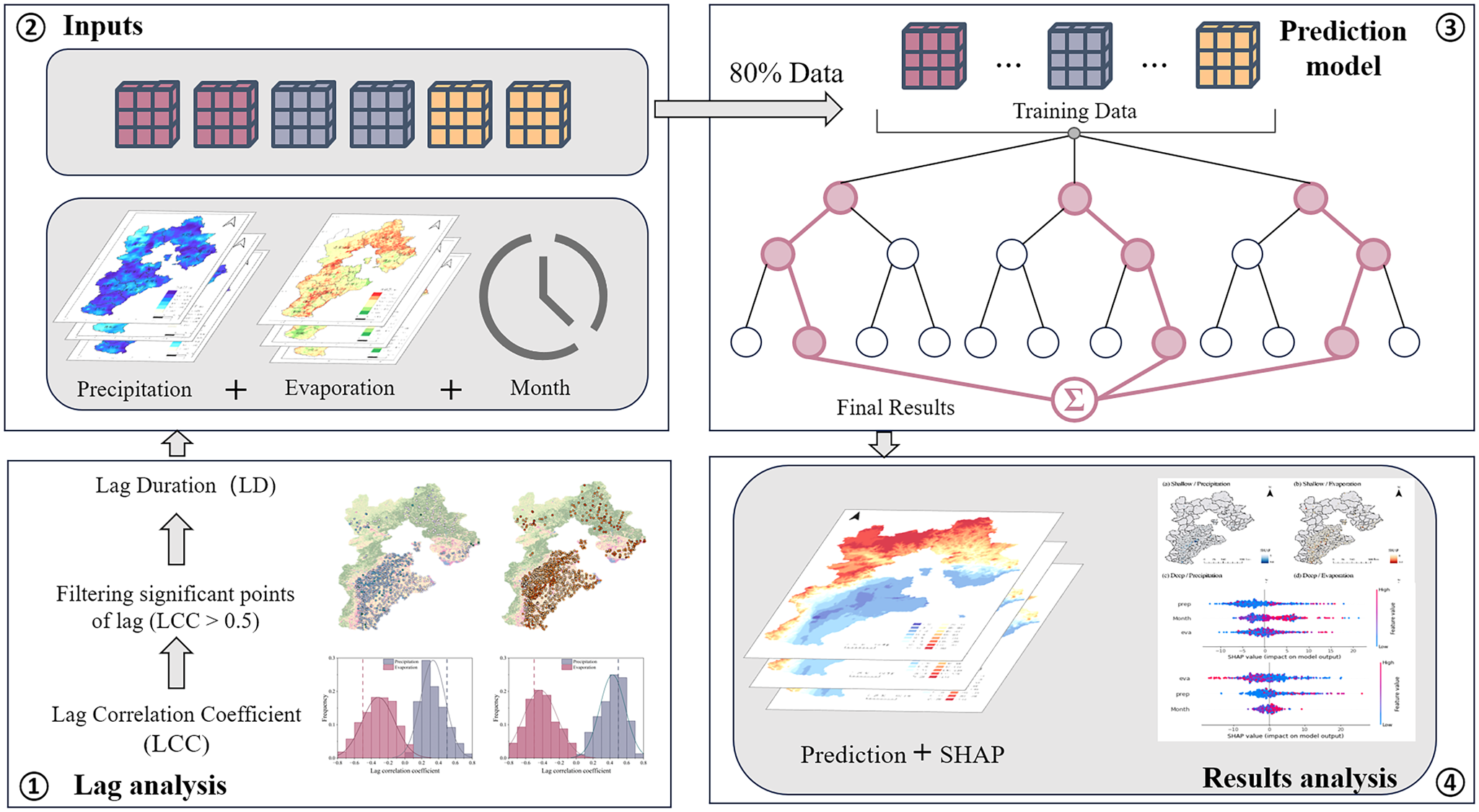
The study showed that the average lag correlation coefficients of shallow groundwater with precipitation and ET were 0.334 and 0.315, respectively, and significant lag effects were found in 15.08% and 19.06% of the monitoring sites. The average lag correlation coefficients of deep groundwater with precipitation and ET were 0.432 and 0.428, respectively, and significant lag effects were found in 36.59% and 35.62% of the monitoring sites for precipitation and ET, respectively.
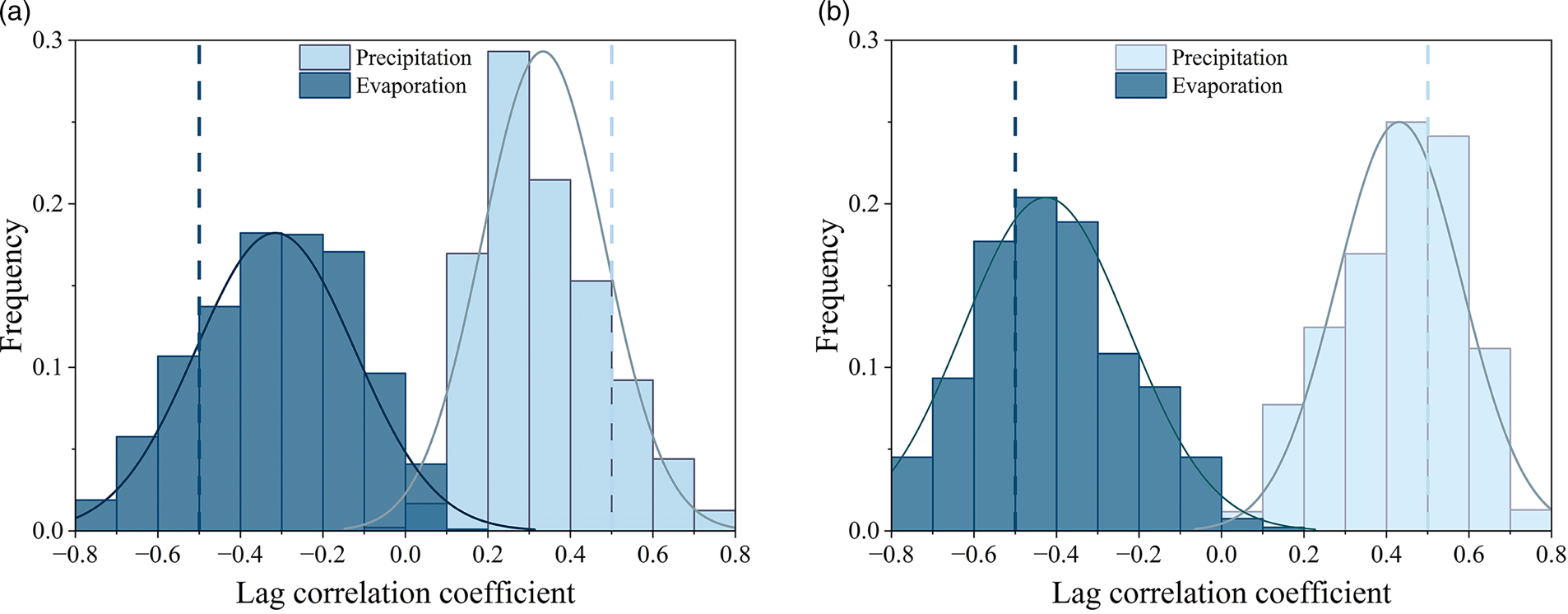
The study classified all monitoring sites into four categories based on lag characteristics: significant lag in both precipitation and evapotranspiration (MET lag), precipitation lag dominant (P lag), evapotranspiration lag dominant (ET lag), and non-significantly lagged sites, and these classifications are shown in Figure 3. The monitoring sites that showed significant lag effects were mainly concentrated in the south-central part of Hebei Province as well as in the mountainous forest areas in the north. Human mining activities have altered hydrologic processes in the shallow overexploited areas, resulting in disturbed groundwater system management, slower infiltration processes, and more pronounced response lags. In addition, the dense soil and vegetation cover in the forested areas is effective in retaining water in the root and soil layers, so the effects of precipitation and evapotranspiration on the groundwater system are delayed and the lag effect is more pronounced. Compared with the MET lag points, the precipitation and ET lag points have a wider distribution, mainly concentrated in the eastern and southeastern borders of Hebei Province, which may be related to the higher annual precipitation and ET in these areas.
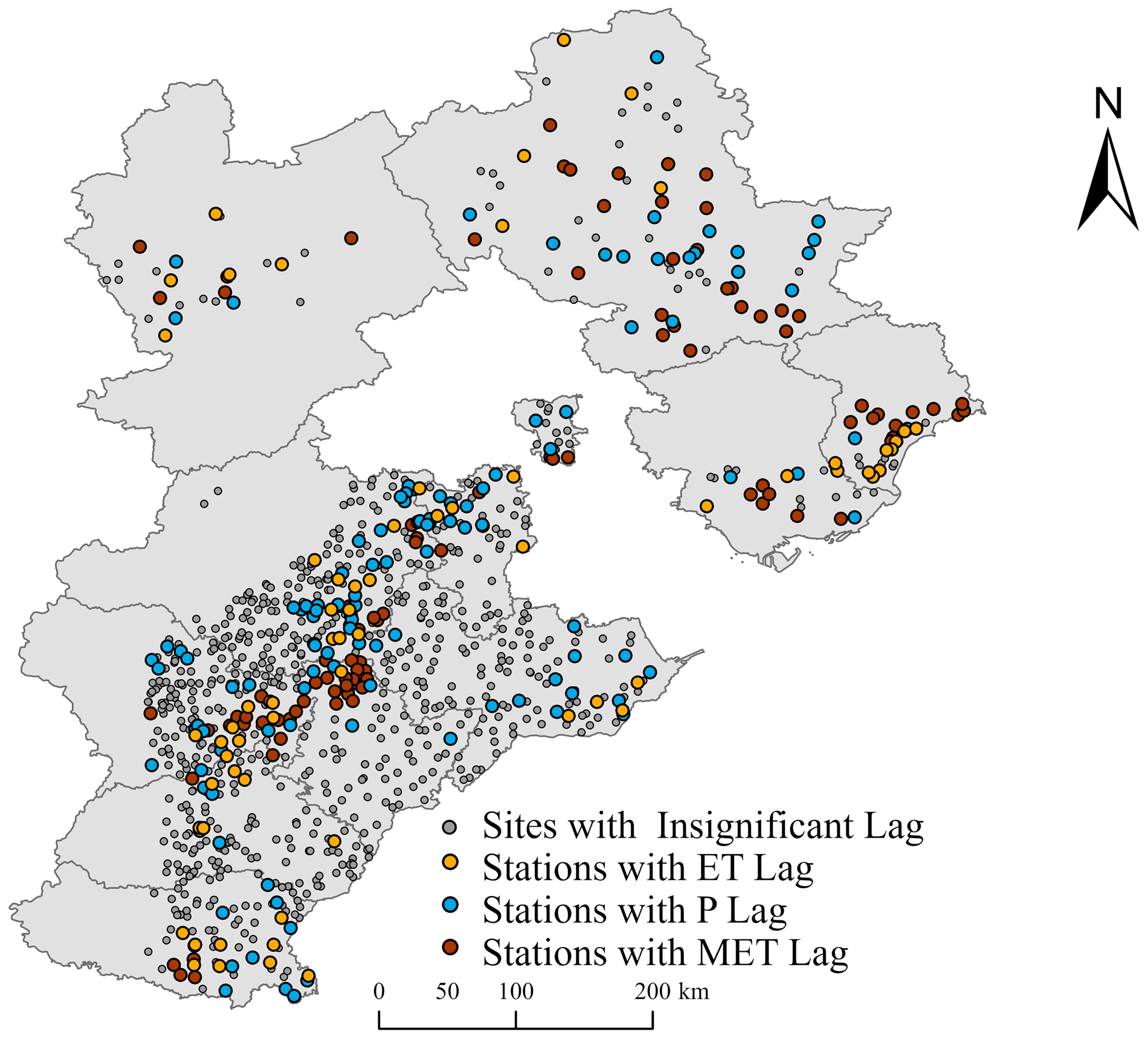
In terms of groundwater prediction, the model considering the lag effect significantly improved the accuracy, with R² improving by 3.37% for shallow groundwater and 3.87% for deep groundwater. Also, the mean square error (MAE) and root mean square error (RMSE) were significantly reduced, indicating better prediction performance of the model after incorporating the lag effect.

The importance of the factors assessed using the SHAP method in groundwater level prediction was investigated.The SHAP analysis showed that when lag effects were considered, the importance of precipitation and ET increased significantly, while the influence of time variables decreased. For deep groundwater, precipitation is the most important factor and has a greater effect on groundwater levels than ET.The SHAP method also shows that precipitation and ET have a significantly greater effect on groundwater fluctuations in areas of over-exploited groundwater than in other areas.
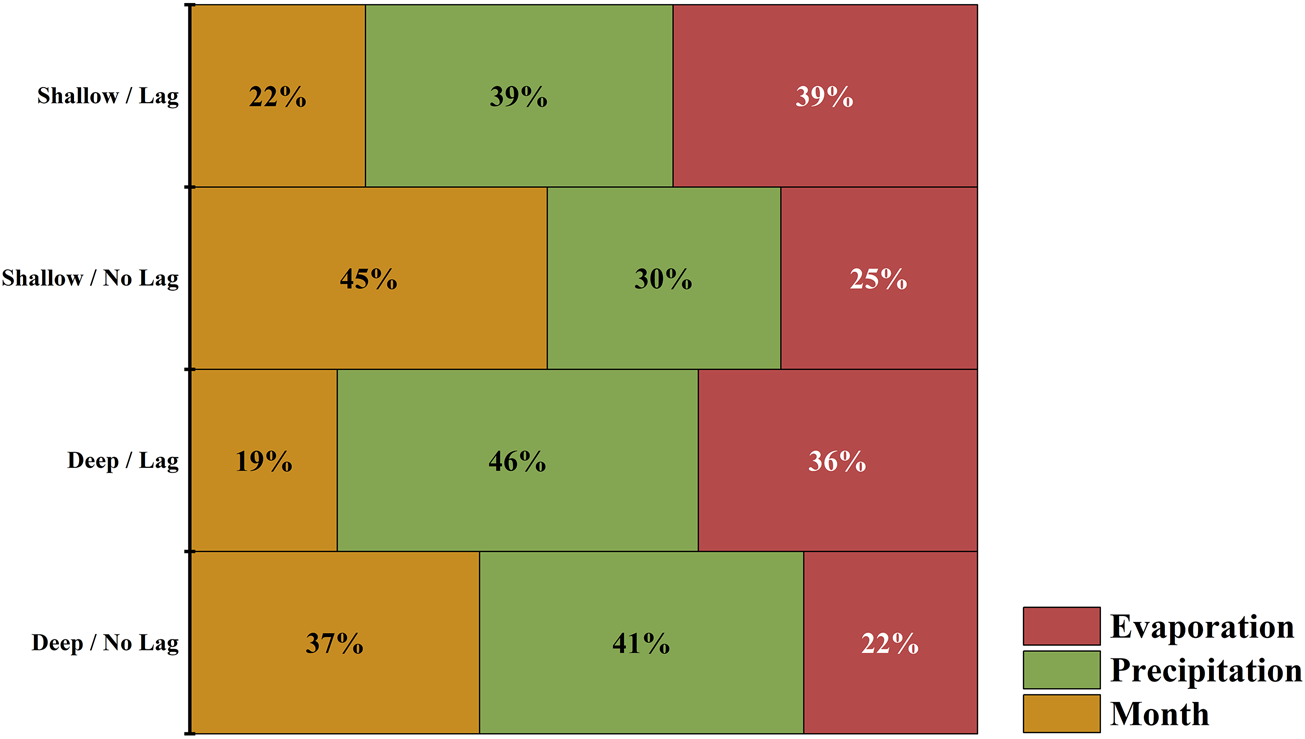
In this study, a more accurate groundwater level prediction method is proposed by considering the hysteresis effect of meteorological factors on groundwater, which provides an important decision support for the scientific management and sustainable utilization of water resources.
First author: Yang Fan
Corresponding author: Associate Professor Zhang Jun
Other authors: Zhang Xinan, Yang Jiabao, Professor Dai Qiang
Link to the paper: https://doi.org/10.2166/hydro.2025.295